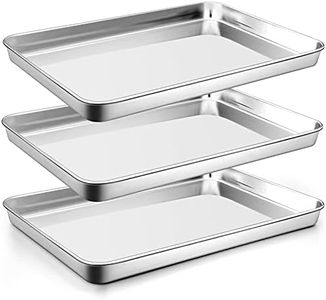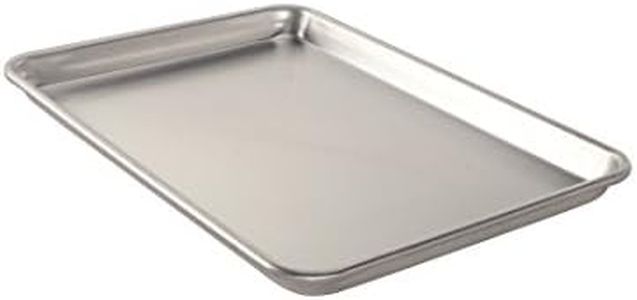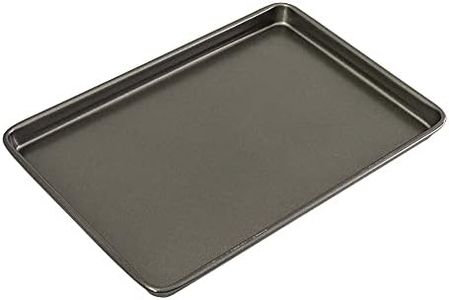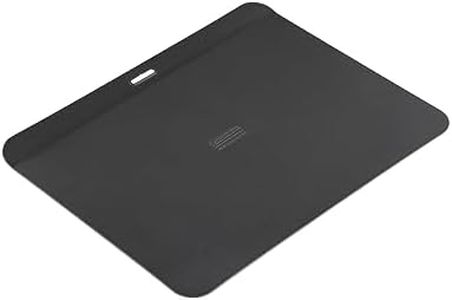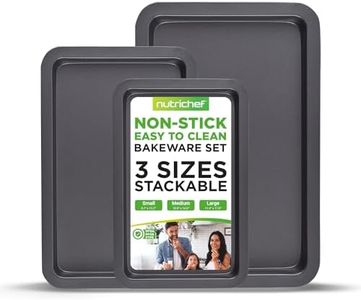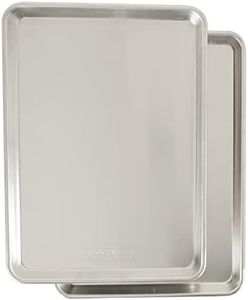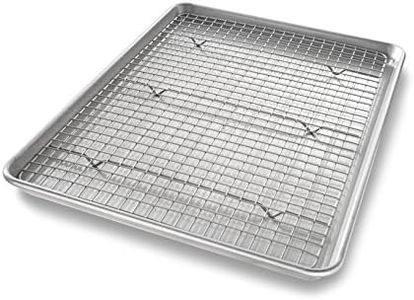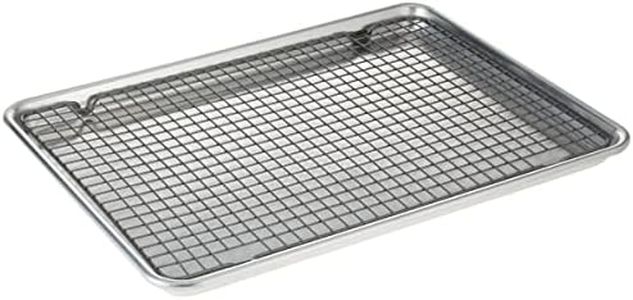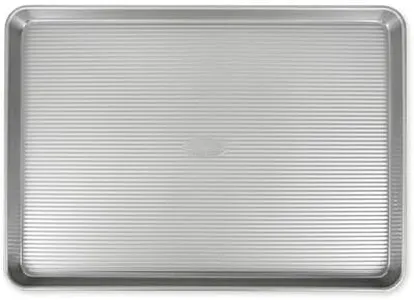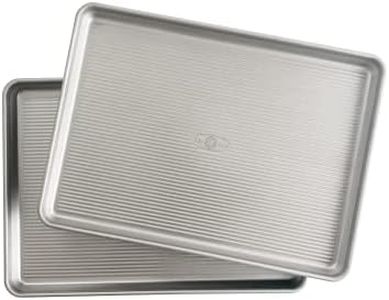We Use CookiesWe use cookies to enhance the security, performance,
functionality and for analytical and promotional activities. By continuing to browse this site you
are agreeing to our privacy policy
10 Best Baking Sheets
From leading brands and best sellers available on the web.Buying Guide for the Best Baking Sheets
When choosing baking sheets, the key is to understand your baking habits and what types of foods you plan to prepare. A good baking sheet will ensure even cooking, easy cleanup, and last you a long time. Think about what you bake most—cookies, bread, roasting vegetables, or something else. This can guide which features will matter the most for you.MaterialThe material of a baking sheet is crucial because it affects how heat is distributed and how your food bakes. Common materials include aluminum, stainless steel, and nonstick-coated sheets. Aluminum conducts heat well, leading to even browning, but may be prone to warping if thin. Stainless steel is sturdy and durable but might heat unevenly. Nonstick coatings make for easy cleanup, but can wear down over time. If you bake sticky items frequently, a nonstick surface is helpful; for general use and durability, consider heavy-gauge aluminum or stainless steel.
Thickness (Gauge)Thickness, often measured by gauge, determines how likely the sheet is to warp and how evenly it bakes. Lower gauge numbers mean thicker, sturdier pans (e.g., 10-14 gauge), while higher numbers are thinner and more likely to warp under high heat. Thicker sheets heat more evenly and are less likely to bend, making them better for heavy use or high-temperature roasting. If you bake primarily at moderate temperatures, a medium-thick sheet works well; for high heat or frequent use, go for thicker options.
SizeBaking sheets come in different sizes, such as full, half, and quarter sheets. The size affects how much you can bake at once and whether the sheet fits in your oven. Most home ovens suit half-sheet pans (approximately 18 x 13 inches). Quarter-sheets are great for smaller batches or toaster ovens, while full sheets are usually too large for standard home ovens. Pick the size that matches your typical baking batch and the storage space in your kitchen.
Rim StyleBaking sheets can be rimmed (also called jelly roll pans) or rimless. Rimmed sheets are versatile because they prevent food or juices from sliding off, which is ideal for roasting or making cookies with sticky batters. Rimless sheets provide better airflow, helping some cookies brown more evenly and making it easier to slide baked goods off. If you roast or bake items that release juices, rimmed sheets are safer; if you want a perfectly crisp cookie bottom and easy access, try rimless.
Surface TextureSome baking sheets have textured or patterned surfaces, meant to improve airflow, reduce sticking, and help things bake more evenly. Smooth surfaces are easiest to clean and versatile, while textured sheets can be beneficial for crispy results. If you mostly bake cookies or delicate pastries, a smooth surface is ideal; for foods where crispiness matters—like roasted vegetables—consider a textured option.
Ease of CleaningHow easy a baking sheet is to clean can be a significant factor, especially if you bake often. Nonstick surfaces are easiest to wipe clean but may not be dishwasher safe. Stainless steel and aluminum may require more scrubbing, but can often handle dishwasher cleaning if marked as such. If you dislike scrubbing or use sticky ingredients, prioritize nonstick or dishwasher-safe sheets. Otherwise, a little extra effort is worth the durability of classic metal pans.
